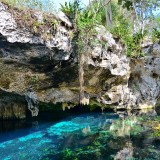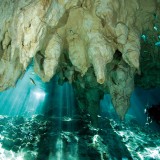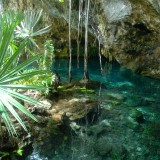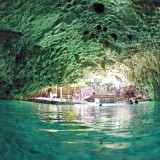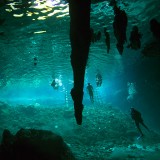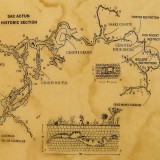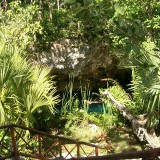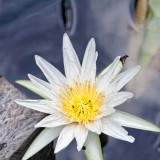loading
Cenote Snake
| The tree roots search for the water of the cenotes, as does the eye of the artist. It is located a short distance from the entrance to Grand Cenote. |
Snorkeling area
| Crystal clear waters are a mirror for this privileged environment |
Access to the cenote
| Next to the stairway to the cenote, there is a palapa where you can rent diving and snorkeling gear. |
Cafeteria
| At the cenote entrance you can find drinks, cold coconuts and some snacks |
The Maya and the cenotes
For the Maya, cenotes were a freshwater source as well as sacred sites; they represented the gateway to the underworld and the home of Chaac, the rain god.
What is a cenote?
A cenote is a water-filled depression in the earth created by the circulation of water underground and the process of rain filtration through the limestone surface rock. The collision with an asteroid 65 million years ago contributed to their formation.
- Open cenote
- Underground river
- Underground cenote
- Spring
- Age-old mammoth and human remains have been found inside
Entrance to Grand Cenote
| It was one of the first cenotes in the Riviera Maya to be opened to tourism, in 1995. The 200-hectare land has 10 cenotes, with Grand Cenote being the most accessible to visitors. |
Introduction Grand Cenote
Grand Cenote forms part of the world’s second longest explored underground river system: Sac Actun (“white cave” in Maya), which connects with the Nohoch Nah Chich (“giant house of birds”) system; with a total length of 222 kilometers and a maximum depth of 101 meters.
